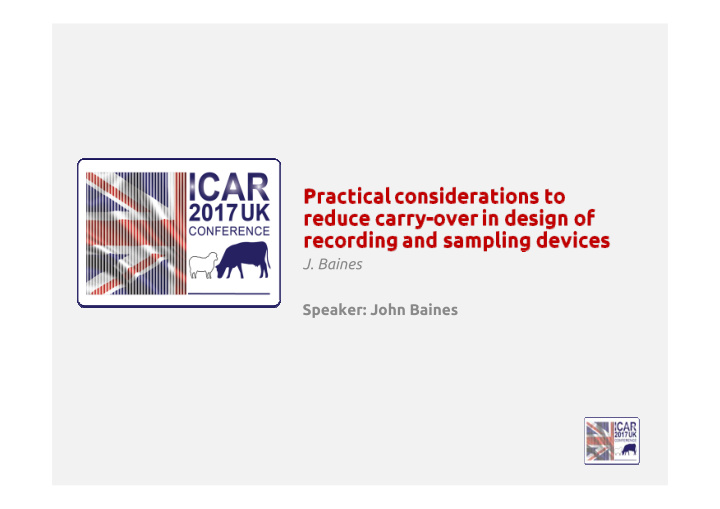



J. Baines Speaker: John Baines
Practical Considerations to Reduce Carry-Over in Design of Recording & Sampling Devices 14 th June 2017 John Baines - Technical Director
What Carryover? • Colostrum • Milk • Water and/or cleaning agents • External contamination
Opportunities for Residue?
Does Backflush Help??
Milk - Physical Properties • Physically, milk is a rather dilute emulsion combined with a colloidal dispersion in which the continuous phase is a solution. Its physical properties are similar to those of water but are modified by the concentration of solutes and by the state of dispersion of the other components. • It is “Sticky”
Surface Tension of Milk, Water and a Plastic (dyn/cm at 20 ° C) Raw Milk 49-51 Cream 42-45 Water 72.8 Polysulphone 42.1
How Much Carryover per Milking Unit? Claw + Long Milk Tube 80 – 160ml Plus Milk Meter 0 – 20 ml
Sticky Milk Residues
Significance of Carryover - Fat Carryover Fat Carryover gm milk % gm fat 50 8 4 100 8 8 160 8 12.8
Significance of Carryover - Fat Yield Fat Fat 50 gm 160 gm kg % gm gm Fat % gm Fat % 2 4 80 84 4.2000 92.8 4.6400 5 4 200 204 4.0800 212.8 4.2560 10 4 400 404 4.0400 412.8 4.1280 15 4 600 604 4.0267 612.8 4.0853 20 4 800 804 4.0200 812.8 4.0640 Colostrum? Antibiotic Residue? Micro-organisms??
Internal Surface Area (to point of sample extraction) Conventional Milking Unit 0.33 - 0.45 m 2 Automatic Milking Unit 1.27 m 2 (not including sampler)
ISO5707:2007 Construction of Equipment
Practical Steps to Reduce Carryover • End of Milking - Valve Dump • Milk Sweep • Eliminating Non-Draining Milk Tubes • Material Choice??
Conclusions • Carryover is unavoidable • Effect on Fat Content may or may not be significant • Traditional Sampling Model driven by need for fat accuracy • What about Disease Surveillance and Pathogen Recognition? • Need to review Sampling Model for Disease Surveillance, e.g. mid stream sampling?
Thank You
Recommend
More recommend